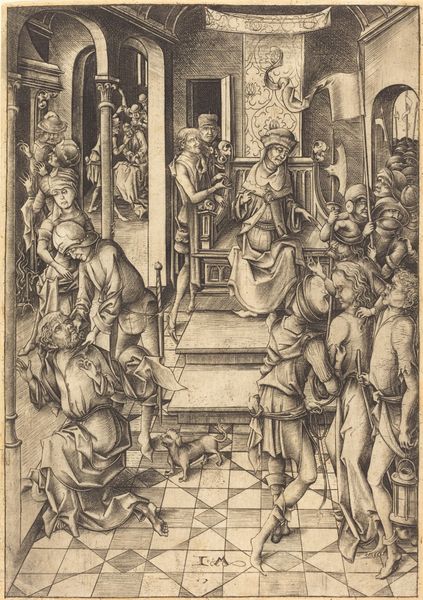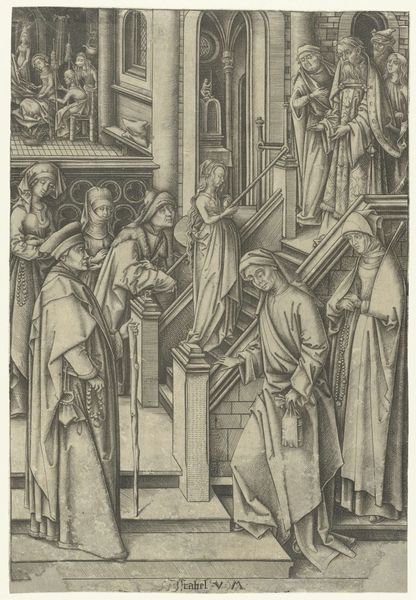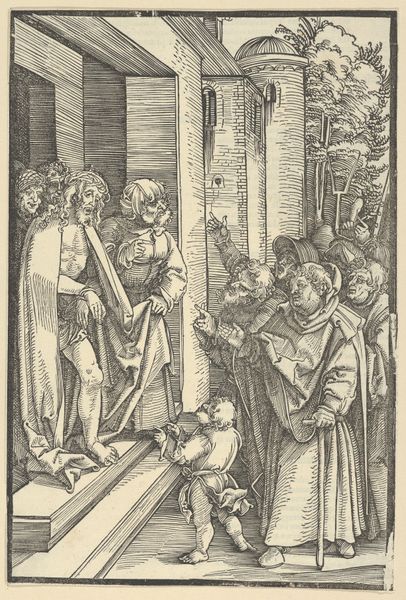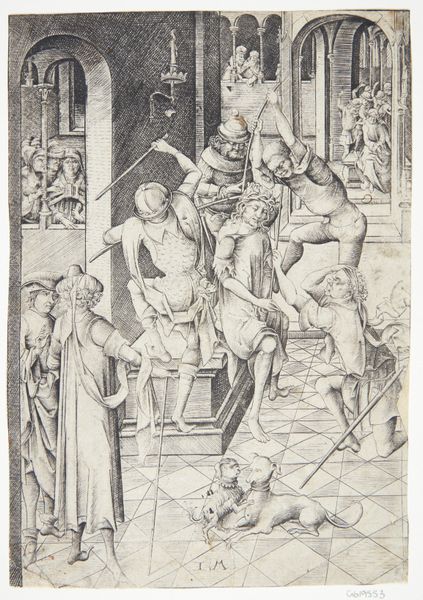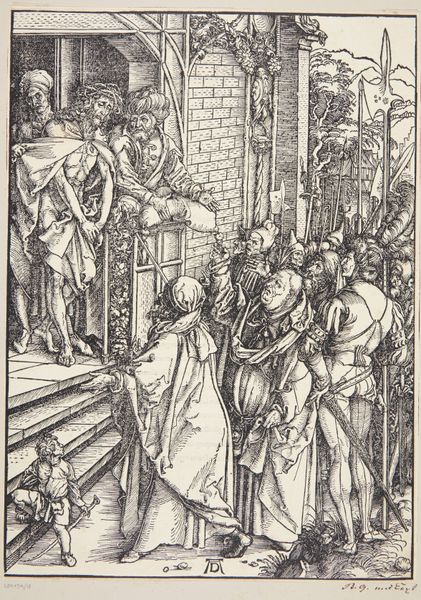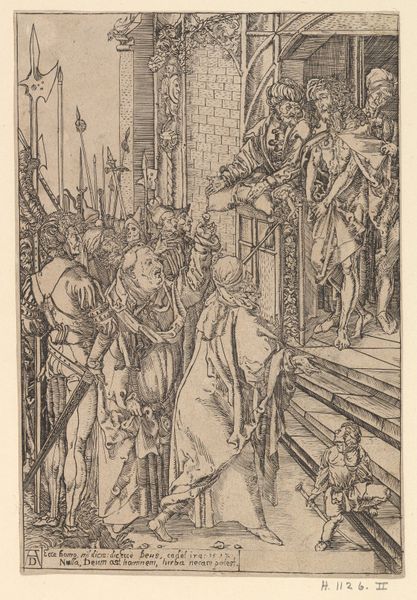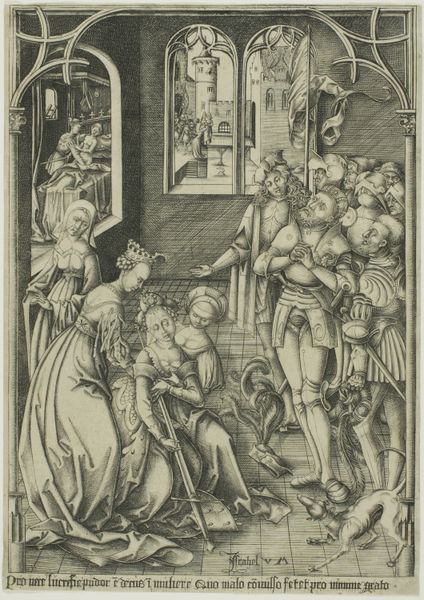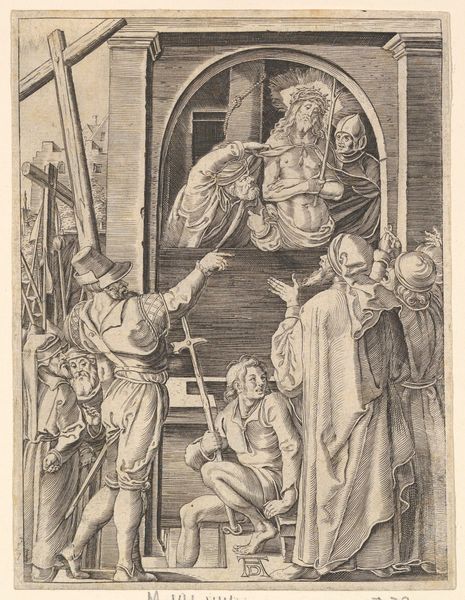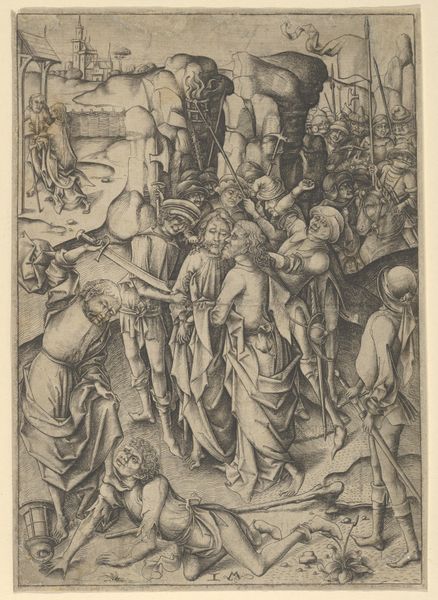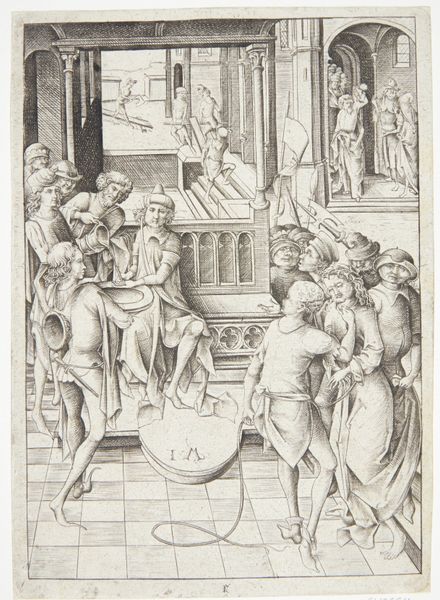
print, engraving
#
medieval
#
narrative-art
# print
#
figuration
#
history-painting
#
engraving
Copyright: National Gallery of Art: CC0 1.0
Israhel van Meckenem made this engraving, Ecce Homo, sometime in the late fifteenth century, depicting the biblical scene of Christ paraded before the people. It’s an image dense with social commentary. Van Meckenem’s Germany was a place of strict social hierarchy and rising merchant power. The artist uses visual cues to signal status. Notice the rough, jeering faces of the crowd versus the ornamented garb of the ruling figures escorting Christ. There’s also a chained ape-like figure in the lower left, a common trope in art of the period, symbolizing base human instincts. The engraving process itself is important. Printmaking allowed for the mass distribution of images. It democratized art, taking it outside the confines of the church and noble collections, placing religious and political ideas into the hands of a wider public. By examining account books, guild records, and even clothing inventories from the period, we can better understand how this image functioned within the complex social fabric of its time. Art isn’t created in a vacuum, it’s a product of its social conditions.
Comments
No comments
Be the first to comment and join the conversation on the ultimate creative platform.


